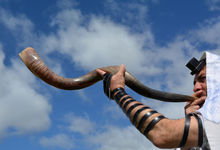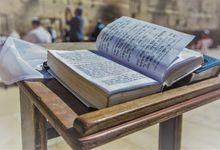Martha and Mary: there is a time for everything
“At the feet of Jesus”? Or: “Of service be to Jesus”? Jesus Himself gave Mary and Martha a clear answer. But this can be quite confusing. Two small words, namely περισπάω and τυρβάζω, provide clarification.

We don’t know how many guests there were. A little earlier in the biblical passage we read about the return of the 70 disciples. Jesus was definitely not alone when He was in Bethany (Luke 10: 38–42). For “it happened as they went that he [Jesus] entered a certain village”.
Bethany was a haven for Jesus, where He found peace and rest. This was the place where three of the four people lived of whom the gospel of John says that the Lord loved them: the siblings Martha, Mary, and Lazarus.
Lady of the house and disciple
As the obviously older sister, Martha had the role of mistress or lady of the house—and was responsible for looking after the guests. This was not only based on the biblical injunction to offer hospitality to strangers, but was above all a matter of reverence.
What Mary did, however, was quite inappropriate. She sat at the feet of the Master, listening to Him like a disciple. Under normal circumstances, a rabbi’s daughter might still have been tolerated, if she had also been married to a rabbi. But this was different.
Role model and representative
There was plenty to do. Martha was busy with the preparations and therefore asked the Lord to tell Mary to help her. In the end, however, it was she who was reprimanded by Him: “Mary has chosen that good part, which will not be taken away from her.”
This situation is highly symbolic. Martha represents a type of person, who lives her faith in a practical kind of way and busies herself with social activity. Mary, on the other hand, represents the quiet and reflective side of religious contemplation. Does Jesus here really speak out against the generous and giving type of character and for the receiving temperament?
Far ahead of the other disciples
Even Mary is not reduced to a passive kind of devoutness, however. In John 12 we read that it is she who washes the feet of Jesus with precious oil. In this anticipated unction she manifests her understanding of the nearing of His sacrificial death—something the other disciples had yet to understand.
Nor does Martha exhaust herself in constant activity. In John 11 it is she who professes: “Yes, Lord, I believe that You are the Christ, the Son of God, who is to come into the world”—an understanding that the other disciples only reach at the end of the gospel.
Belief needs both
A closer look at the Greek text shows us what this is really about. When the English-language Bible says that Martha was troubled about many things, the Greek uses the expression perispaó. In essence this means: being torn, being completely caught up in something, being distracted.
And when Jesus speaks about Martha being troubled over many things, the Greek uses the word tyrbázo, whose root is týrbe (chaos, noise, confusion) and means “allowing oneself to be torn back and forth in a restless way”—namely away what is really important. In Bethany, Luke is therefore not criticising being active, but being torn back and forth and being drawn away from that which is truly important.
In each one of us there is a little bit of Mary and a little bit of Martha, and that’s a good thing. For living faith needs quiet contemplation as much as it needs an active and practical religious life. What’s important is that we choose the right example at the right time.
Photo: Gorodenkoff Productions OU

















